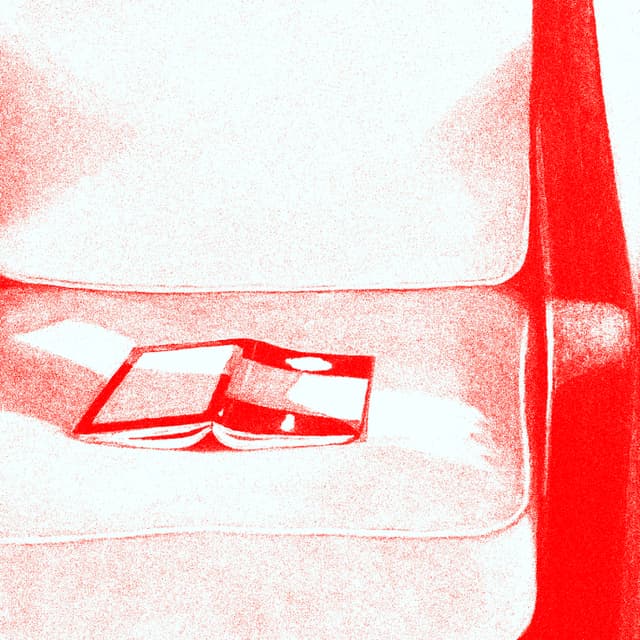
art & Literature

Cinema has always been influenced by visual art. But beyond the usual nods to classics like Vermeer or Hopper, there’s a more chaotic, experimental side to the relationship between art and film. It’s the spaces where the surreal, the unsettling, and the provocative meet that create some of the most unforgettable cinematic experiences. From disorienting dreamscapes to fragmented narratives, here’s a look at how visual art’s darker, edgier side has shaped some of the most boundary-pushing films.
6 january 2025
Key Work: Study After Velázquez’s Portrait of Pope Innocent X (1953)
Francis Bacon’s distorted, screaming figures feel like a punch to the gut. His art grapples with existential dread and the grotesque beauty of the human form. The smeared colors and chaotic intensity mirror the feeling of unraveling, both physically and mentally.
In Film:
David Lynch’s Eraserhead (1977) feels like it was plucked directly from a Bacon canvas. The surreal body horror and the oppressive atmosphere of dread echo Bacon’s approach to deforming reality. Similarly, Charlie Kaufman’s I’m Thinking of Ending Things (2020) captures that same fragmented, nightmarish quality, where the characters—and the audience—feel trapped in a distorted version of reality.

Key Work: The Lovers (1928)
René Magritte’s surrealist paintings often explore the uncanny—what feels familiar yet deeply wrong. The Lovers, with its two figures kissing through cloth-covered faces, is unsettling and intimate, suggesting connection and disconnection all at once.
In Film:
Charlie Kaufman’s Synecdoche, New York (2008) shares Magritte’s surrealism in its fragmented, collapsing narrative about art and identity. The film’s layered realities and eerie sense of inevitability mirror Magritte’s ability to take everyday objects and transform them into something profoundly strange. Lars von Trier’s Melancholia (2011) also channels Magritte’s juxtaposition of beauty and despair, particularly in its haunting imagery of a planet hurtling toward Earth.

Key Work: Black Square (1915)
Kazimir Malevich’s Black Square represents the purest form of abstraction—a stark rejection of representation, emotion, and narrative. Yet its minimalism invites interpretation, making it a canvas for personal projection and existential pondering.
In Film:
Yorgos Lanthimos’s The Lobster (2015) reflects this minimalist ethos, stripping human interactions down to their barest, most absurd components. The film’s cold, detached tone echoes the void-like quality of Malevich’s work, creating a world that’s both sterile and brimming with subtext.

Key Work: The Elephant Celebes (1921)
Max Ernst’s surrealist art is defined by its chaotic, dreamlike quality. The Elephant Celebes features mechanical and organic elements colliding, suggesting a world in flux, where nothing is stable and everything is bizarre.
In Film:
Terry Gilliam’s Brazil (1985) feels like a direct descendant of Ernst’s surrealism. The dystopian, mechanical chaos of Gilliam’s world echoes the visual dissonance of Ernst’s paintings, where industrial motifs clash with human fragility. Kaufman’s I’m Thinking of Ending Things (2020) again fits here, particularly in its use of surreal, shifting environments that feel like they’re falling apart.

Key Work: Self-Portrait with Physalis (1912)
Egon Schiele’s raw, angular portraits capture human vulnerability in its most unguarded form. His works, filled with distorted figures and harsh lines, delve into emotional discomfort and self-exposure.
In Film:
Lynne Ramsay’s We Need to Talk About Kevin (2011) shares Schiele’s stark, uncomfortable intimacy. The film’s visuals—often centered on the human body as a site of trauma—echo Schiele’s unflinching gaze. The emotional distortion in both the art and the film creates a visceral impact, forcing the viewer to confront the discomfort head-on.

Key Work: Untitled (Black on Maroon) (1958)
Rothko’s abstract paintings are often associated with emotional intensity. His large-scale works use color to evoke moods that are impossible to articulate, creating an overwhelming sense of presence and absence.
In Film:
Gaspar Noé’s Enter the Void (2009) channels Rothko’s emotional use of color through its neon-drenched, hallucinatory visuals. The film’s kaleidoscopic journey through Tokyo feels like stepping inside a Rothko painting—simultaneously beautiful and suffocating.

Key Work: Saturn Devouring His Son (1819–1823)
Goya’s Saturn Devouring His Son is a haunting depiction of chaos, fear, and raw brutality. It’s primal and visceral, a representation of the darkest corners of the human psyche.
In Film:
Darren Aronofsky’s mother! (2017) feels like a direct descendant of Goya’s nightmares. The film’s descent into chaos and destruction mirrors the unrelenting violence of Saturn Devouring His Son. Goya’s influence can also be felt in Guillermo del Toro’s Pan’s Labyrinth (2006), particularly in its blend of beauty and horror.

Visual art has always been a wellspring of inspiration for filmmakers, shaping not only the aesthetics of cinema but also its emotional and intellectual depth. From Francis Bacon’s grotesque distortions to Magritte’s surreal dreamscapes, these artistic visions push the boundaries of what films can look like and, more importantly, what they can make us feel.
Cinema is at its best when it borrows from the strange, the unsettling, and the transcendent qualities of visual art. These influences allow filmmakers to create experiences that challenge, provoke, and linger long after the credits roll. Whether it’s the stark loneliness of Hopper, the surreal fragmentation of Dalí, or the raw intimacy of Schiele, the relationship between the canvas and the screen proves that art and cinema are not separate worlds but deeply intertwined conversations.
For cinephiles and art lovers alike, tracing these connections offers a new way to experience both mediums—reminding us that the most compelling stories are often born where disciplines collide.

art & Literature

Sociology & social issues

culture & identity

human behaviour

art & Literature

culture & Identity